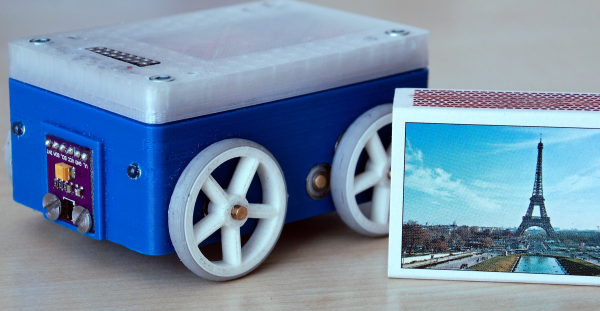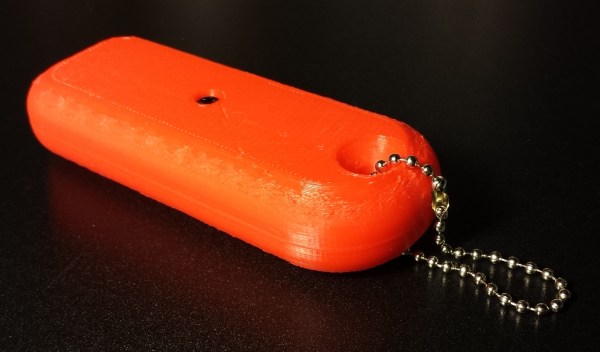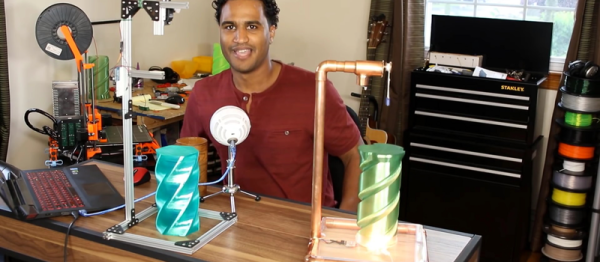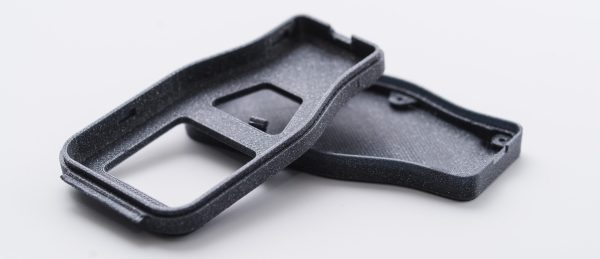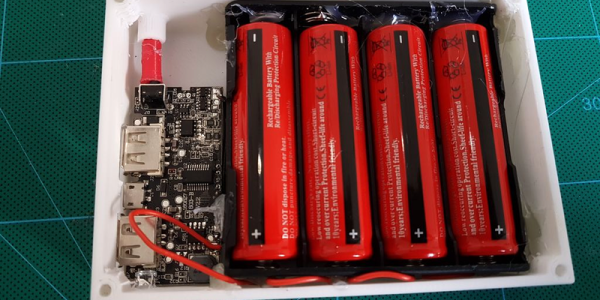[Stefan]’s Mini WiFi/BLE 4WD robot platform (seen next to a matchbox above) packs an impressive capability into a tiny rover. It’s based on a SparkFun ESP32 Thing, a very compact way to add wireless control to your project. Compare it to some giant old UNO with a WiFi shield, these boards are small but powerful, as well as an easy adoption for Arduino fans.
[Stefan] beefed up the robot with a BNO055 module to determine orientation, an APDS-9930 proximity sensor, as well as four CNY70 IR proximity sensors on the bottom, used for line-following. A pair of 6 V motors move the robot, with a DC-DC step up converter boosting the LiPo’s 3.7 V. It’s impressive how many components [Stefan] crammed inside the shell; they’re all packed in there snugly.
The concept behind the robot is that it’s a generic platform that could be customized as needed, and [Stefan] has versions with a LEGO dart gun as well as a camera. The robot’s code resides on GitHub and the custom 3D-printed chassis is up on Thingiverse.
If you like ESP32 projects you should be sure to check out the Monster Board and the Hamster Tracker we posted recently.

